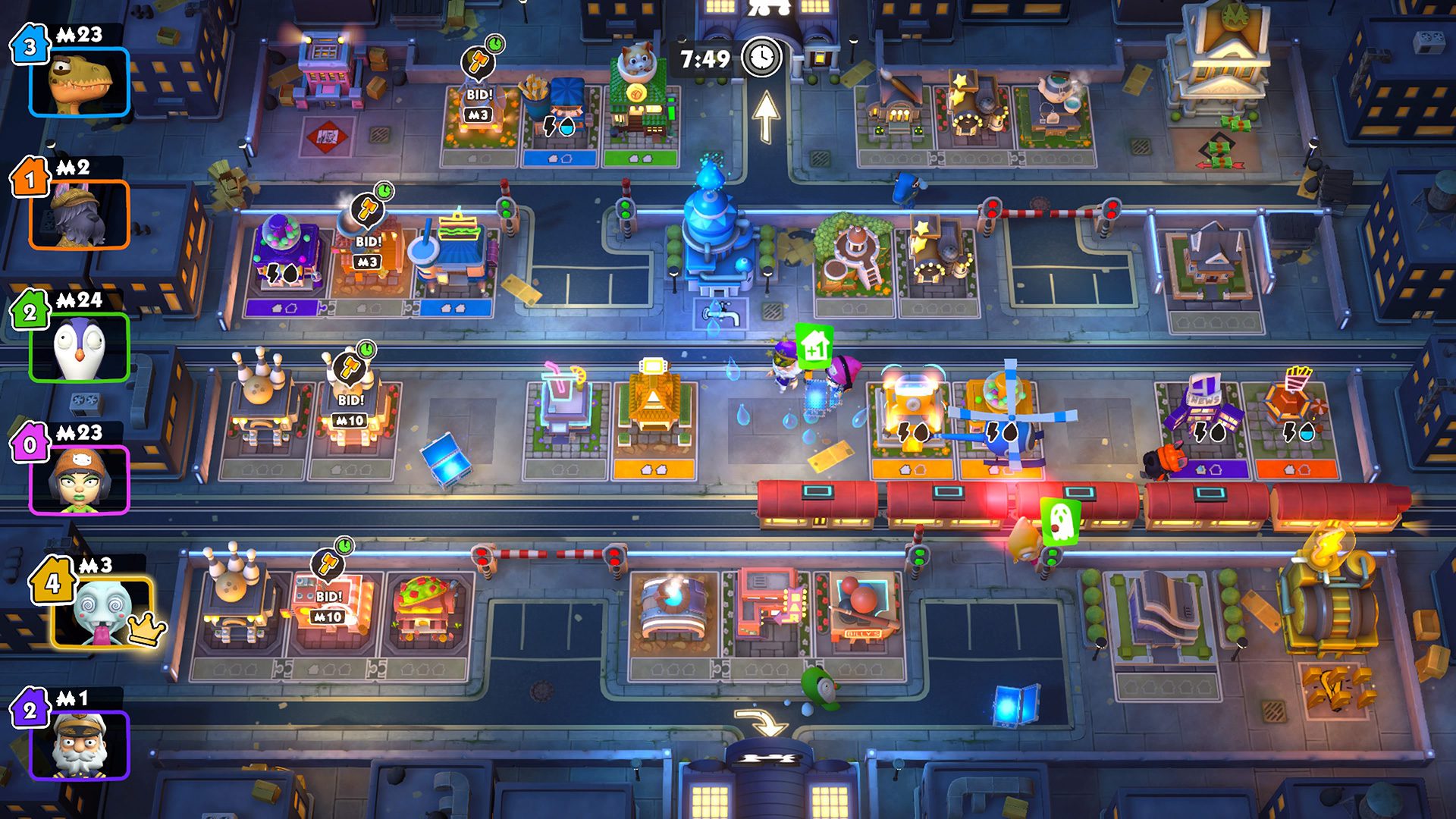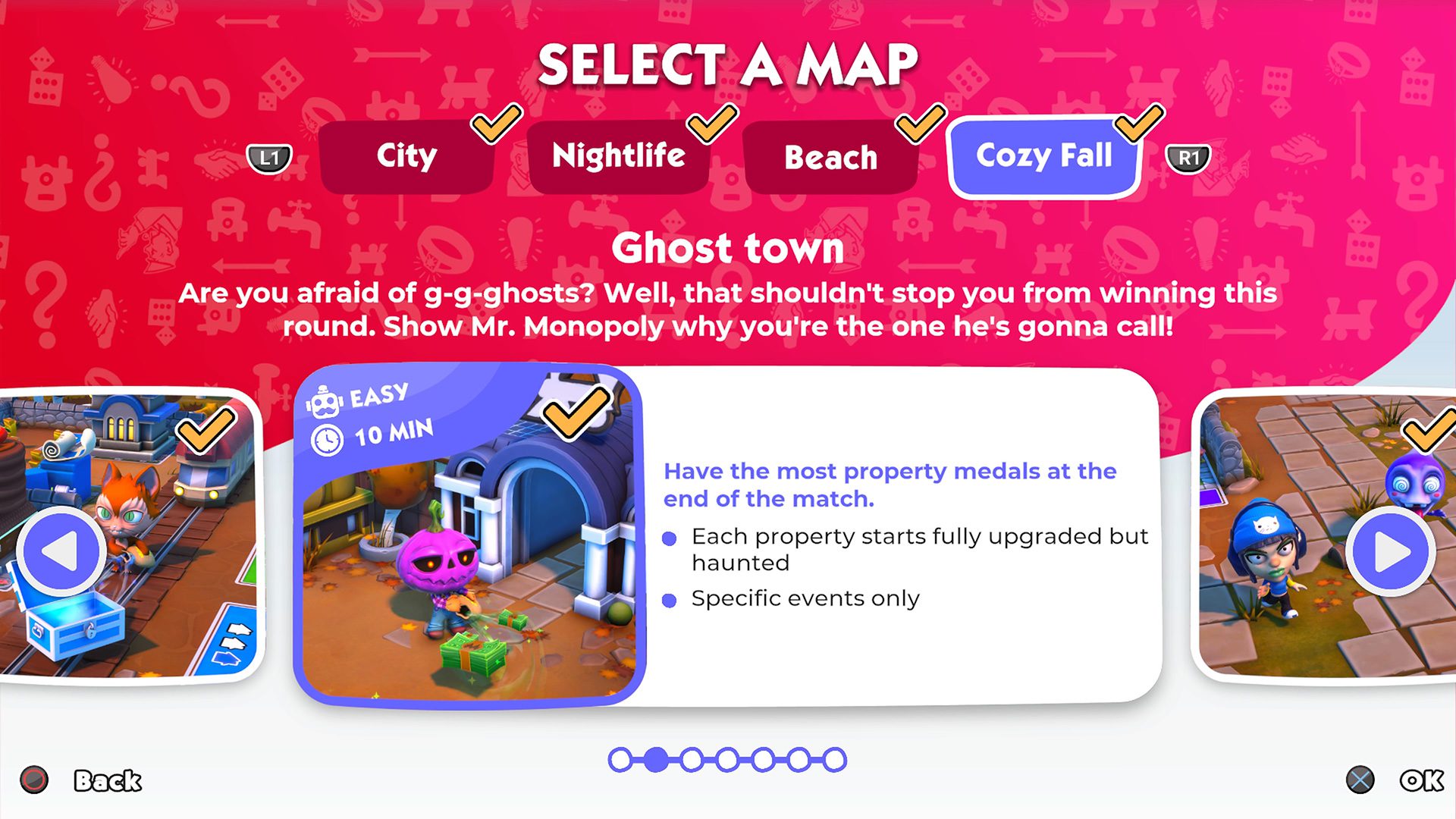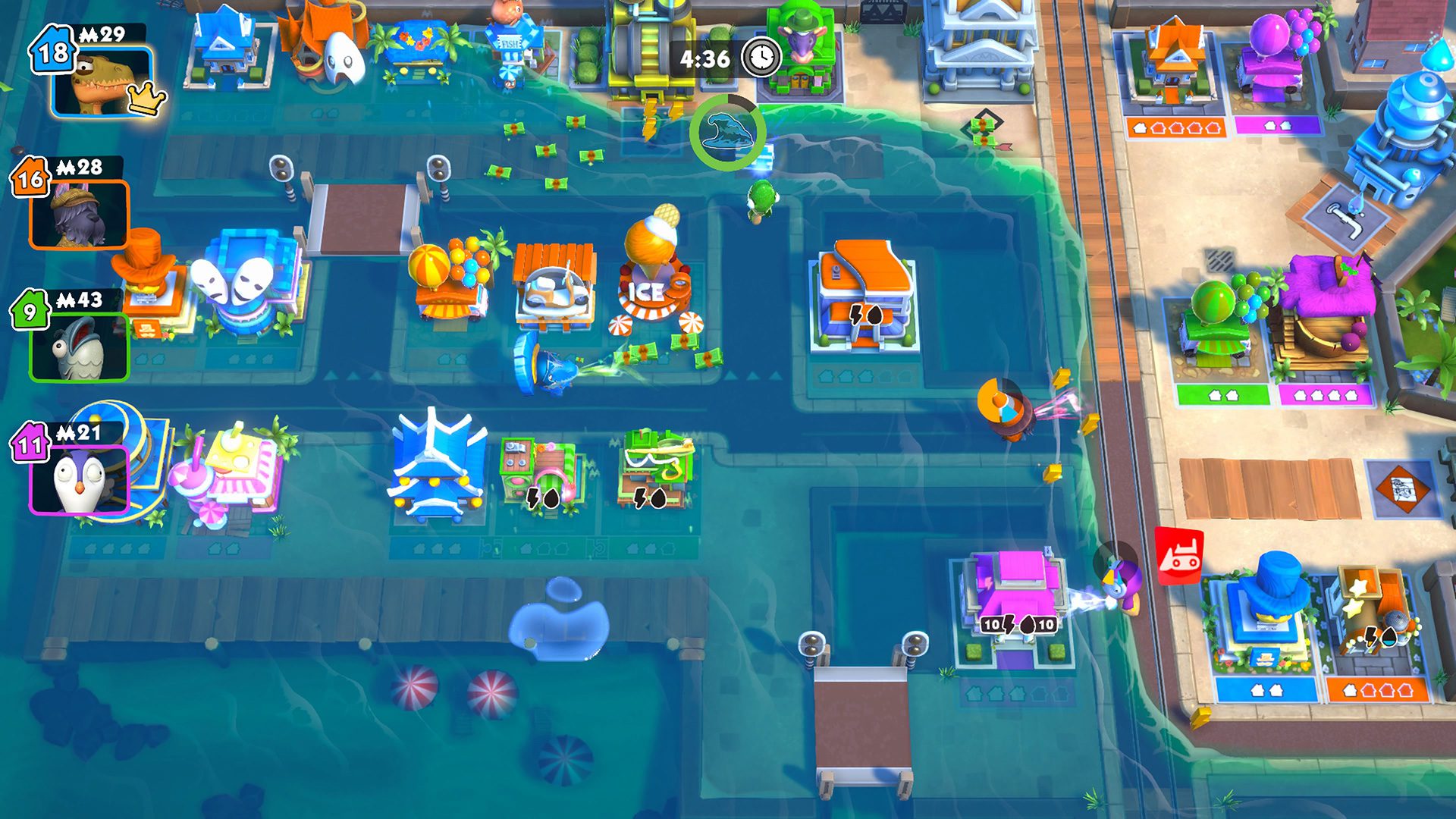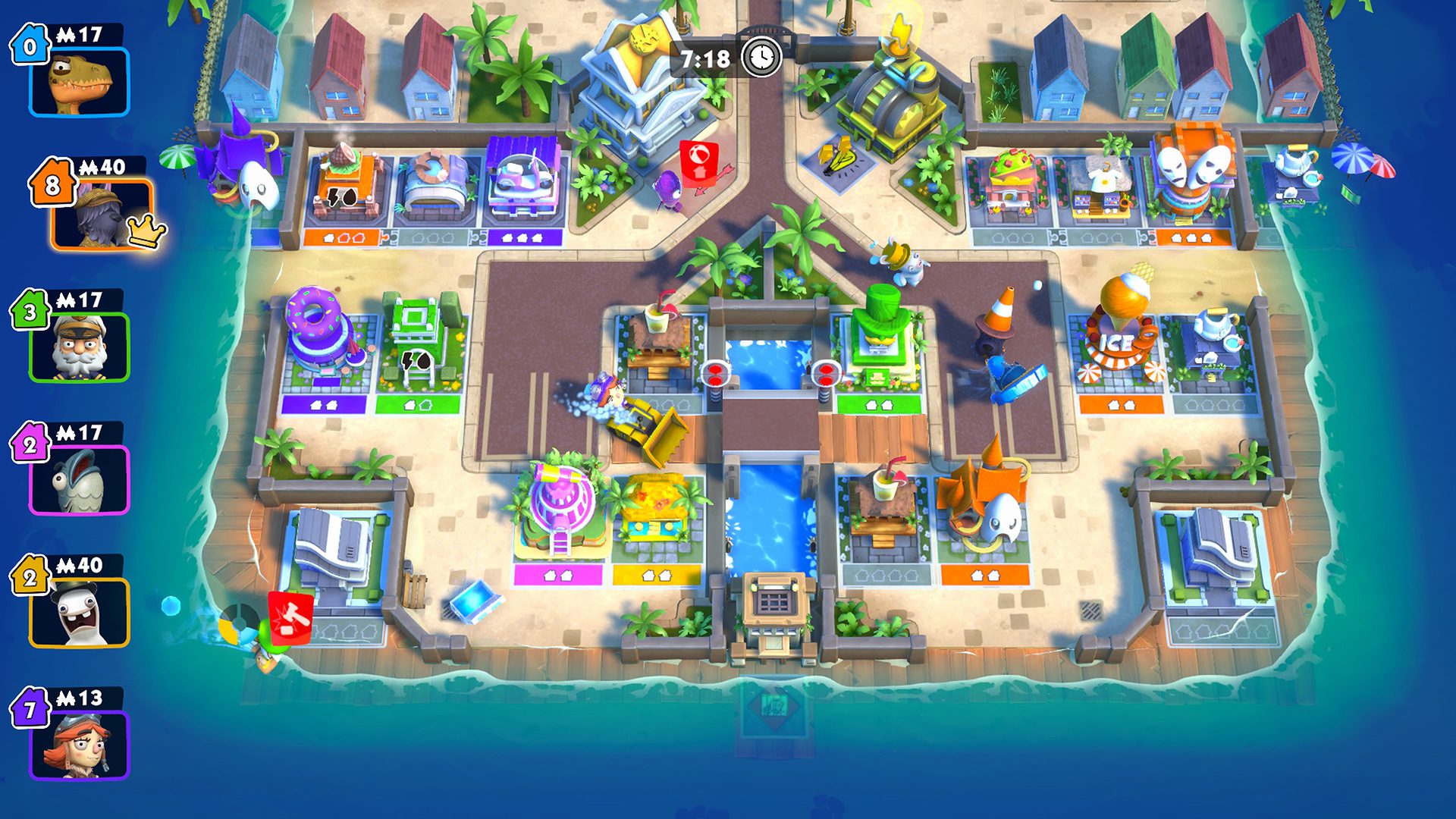I thought we were friends!
Video game adaptations of classic board games can be pretty hit-or-miss depending on who ponied up for the license. Without naming names, I’ve been burned before. Every so often, there’s a particularly thoughtful version, or perhaps a more out-there rendition, and there’s unexpected fun to be had. I had no expectations for Monopoly Madness, straight up.
But after watching a vague trailer, throwing down thirty bucks, and hoping for the best, I’ve really been enjoying this action-based multiplayer game. It has as much in common with Overcooked as it does traditional Monopoly, which is how it got its foot in the door.
And to think, I hadn’t even heard of it before the game was released on PC and consoles.

Monopoly Madness (Nintendo Switch, PC, PS4 [reviewed], Xbox One, Xbox Series X/S)
Developer: Engine Software, Ubisoft
Publisher: Ubisoft
Released: December 9, 2021
MSRP: $29.99
Basically, if you’re into co-op or party games that look like this, you should consider Monopoly Madness — but maybe not at full price. If you’re a solo player, or you’re looking for a more methodical turn-based experience, this is probably not your kind of game.
Instead, it’s a frantic real-time dash to vacuum up money, water, and electricity — as well as some filthy power-ups that can be used to great effect to piss off other players. The idea is simple, in that you “just” have to buy up properties once they hit the market and then upgrade them using resources you collect, yet it always escalates out of control.
Monopoly Madness is a zany arcade action experience, one that requires as much map awareness as you can manage, especially with a full crew of six competitors.
At any given moment of any given match, you’ll keep an eye on a bunch of different things around the stage, aided in large part by voiced call-outs to indicate when a building is going up for auction or what kind of event is about to happen. Rounds go by very fast in Monopoly Madness — usually just 5 or 10 minutes, all told. As a match progresses, various buildings will be listed for sale, and near the end, everything will be claimed by someone. At that point, it boils down to outright stealing or wrecking each other’s buildings.
I really enjoy the decision-making that goes into which buildings to buy, which ones to upgrade, whether it’s better to play offensively or defensively, whether it’s better to focus on one area or spread out, and weighing money versus water and electricity, the latter of which you can only hold so much of. There’s never a dull moment, or even a dull second.
There’s this timeless joy to sucking up and shooting out cash and upgrade resources. That’s true of other games with a vacuum-like mechanic, and it’s definitely true of Monopoly Madness. The alternative — picking up everything you touch — would be so much less enjoyable. Without vacuuming, you wouldn’t be reading this review right now.
In other words, this is a basic gameplay premise, yet it’s fun in practice, even just against the AI. How long it stays fun is up for debate, but I’m pleasantly surprised by how well this game flows and how often matches seem to come down to the absolute wire.

Monopoly Madness has a story mode with 28 scenarios (broken down into four biomes that you can approach in any order), and you can play it alone or semi-cooperatively with another human in the running as you both try to topple the AI opponents. So long as one of you takes the crown, you get a checkmark, which opens up the next level. It can be pretty tense, though. The AI doesn’t act very naturally, to the point where you can reliably predict certain behaviors, but they can still pull nasty last-ditch moves and eke out wins.
The general idea is to snatch up the most properties and to make them increasingly valuable by funneling bits of water and electricity into them, with different upgrade tiers represented by little filled-in house icons. That said, other story mode levels are more focused, requiring you to prioritize the pricier (and less widespread) “hotels,” or to snatch up a whole row of buildings instead of just scattered structures, or to hoard money.
Complicating matters, and also giving the story levels some much-needed chaotic energy, there are often events and obstacles to watch out for — a flash flood, swooping birds, trains pulling in to temporarily cut the map in half, and weaponized coffee, to name a few. Meanwhile, power-ups pulled out of randomized Community Chests can do things like turn you into a ghost, steal a random property with a UFO, downgrade an opponent’s building with a jackhammer or bulldozer, or sneakily put a place back up for auction.
There’s also local and online multiplayer support for free-for-all and team games, with 20 maps and a handful of options/modifiers to change up, including the timer, which can be set up for 5, 10, or 15-minute matches. If you want a slightly more chill (but still plenty wacky) experience, you can always tone down the power-ups or map-affecting events.

While I wasn’t able to test online multiplayer, and it’ll likely be tough to find matches in general, local multiplayer works well. You can control how many bots you want in the mix for free-for-alls, which I appreciate, though I do wish I could set up an actual team game against the AI. As is, you’ll want four humans to make the most of the team format.
I’m also a little down on the story mode, which is essentially a collection of similar levels with different events and goals attempting to keep things fresh. It mostly does the trick, but for the price, I would’ve expected more substance. “Story mode” is a bit of a misnomer. It’s the kind of thing I was happy enough to go through once — and only once. I can’t see myself ever replaying any of the story stuff, though I will be returning for multiplayer antics and character/cosmetic unlocks that are tied to general gameplay objectives.
On the bright side, the core concept of Monopoly Madness is shockingly good, to the point where I can recommend it at the right price. I really dig how fast-paced it is. It’s a worthy party game through and through — with a twist I haven’t quite seen before — and from that lens, I’ve been having a blast. A little more budget could have gone a long way, so I’ll be curious to see if this is a one-and-done project or if Ubisoft will explore a follow-up.
[This review is based on a retail build of the game purchased by the reviewer.]


